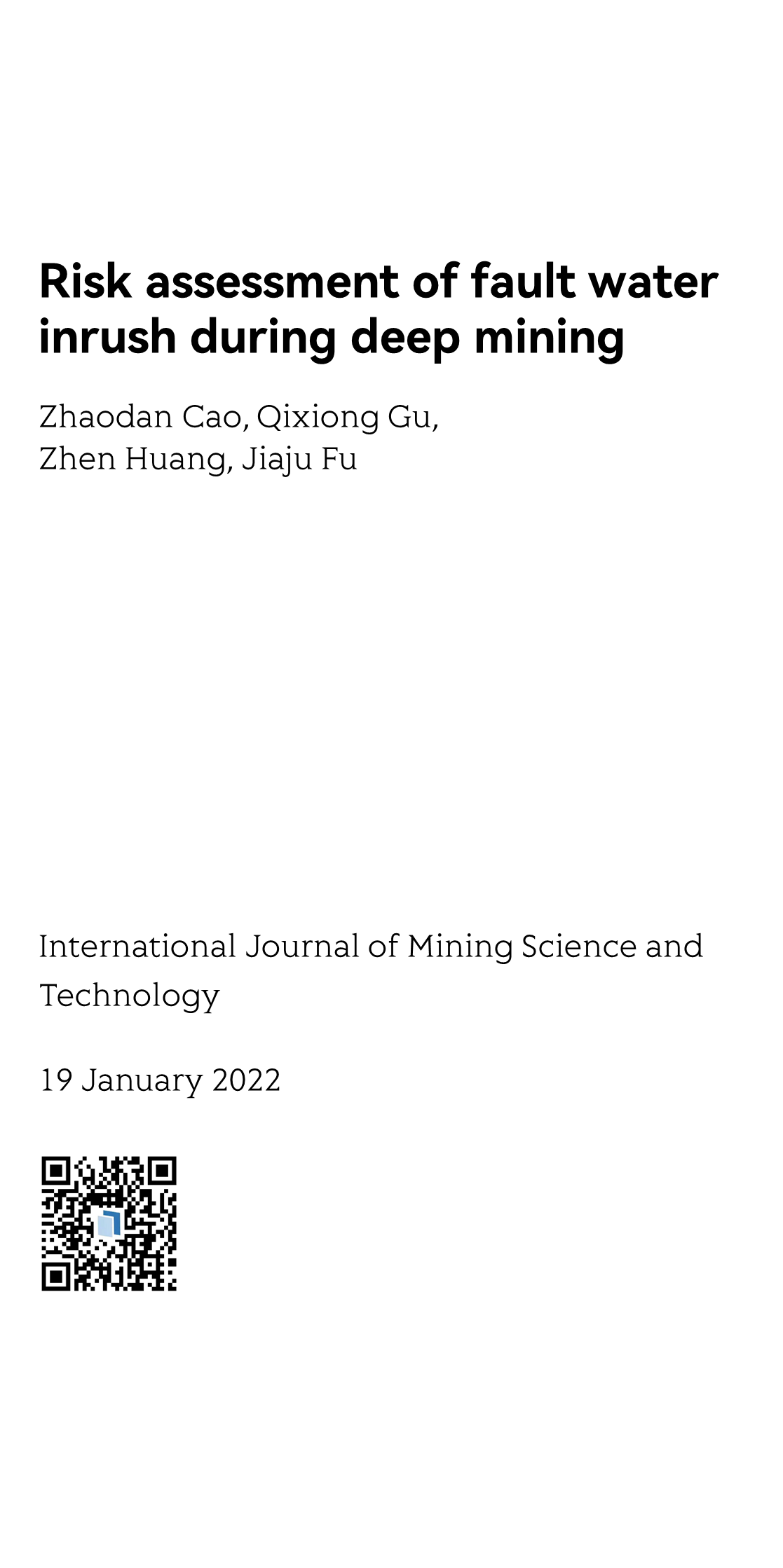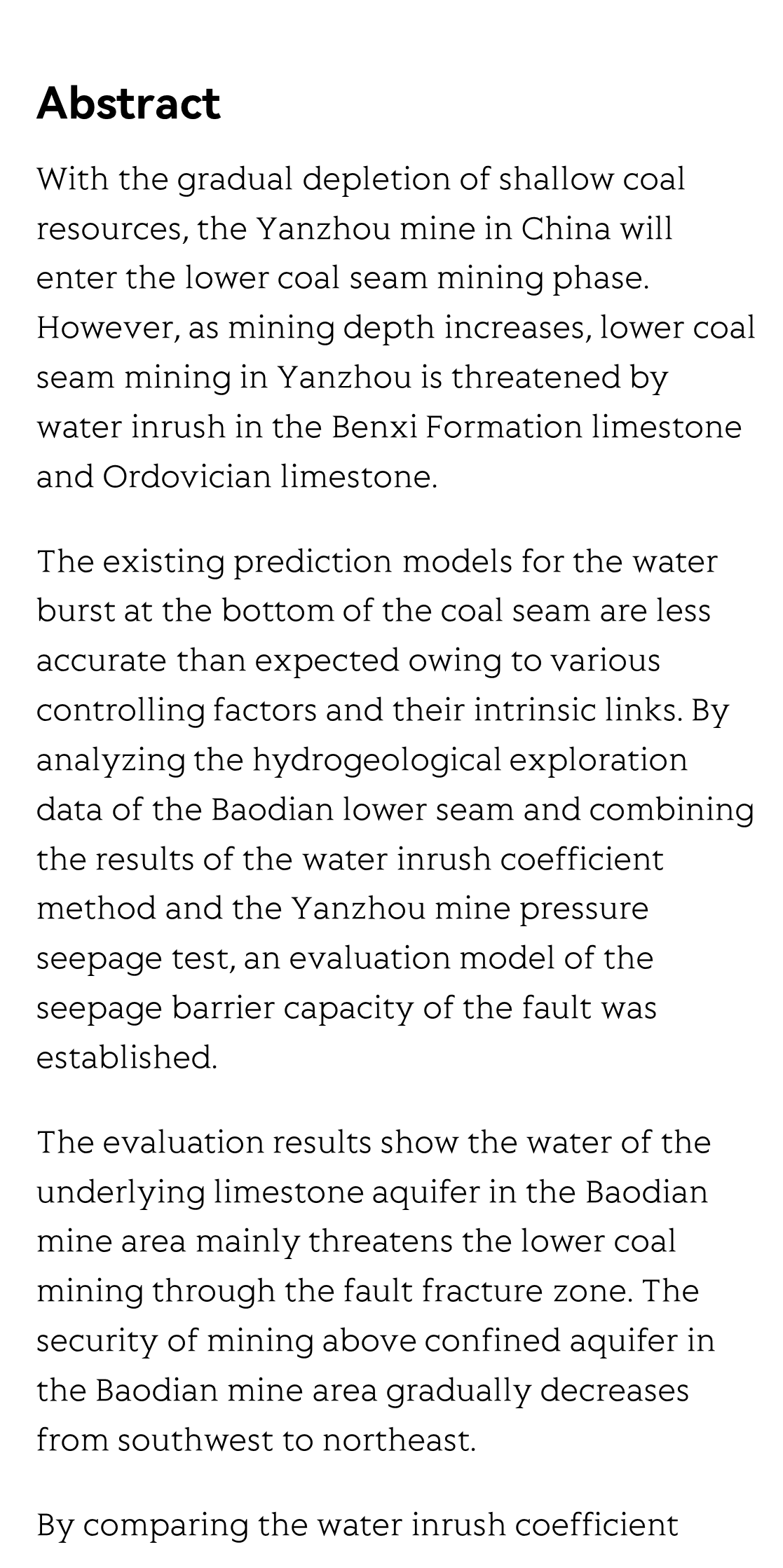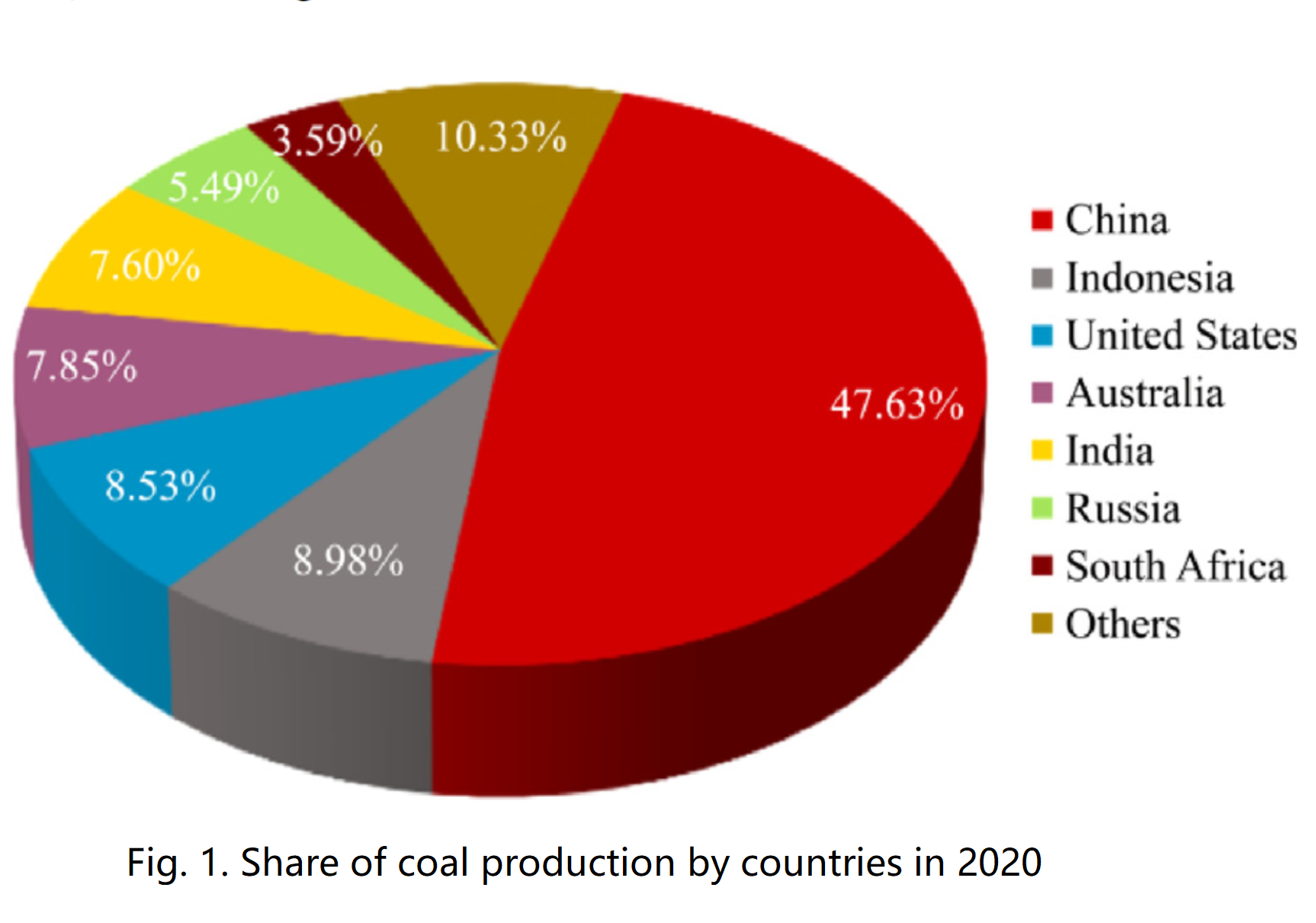(Peer-Reviewed) Risk assessment of fault water inrush during deep mining
Zhaodan Cao ¹ ², Qixiong Gu 古启雄 ³, Zhen Huang 黄震 ³, Jiaju Fu ⁴
¹ College of Civil Engineering and Architecture, Zhejiang University, Hangzhou 310058, China
中国 杭州 浙江大学建筑工程学院
² ZJU-UIUC Institute, Zhejiang University, Haining 314400, China
中国 海宁 浙江大学伊利诺伊大学厄巴纳香槟校区联合学院
³ School of Resources and Environment Engineering, Jiangxi University of Science and Technology, Ganzhou 341000, China
中国 赣州 江西理工大学资源与环境工程学院
⁴ Guiyang Architectural Design and Surveying Prospecting CO. LTD, Guiyang 550082, China
中国 贵阳 贵阳建筑勘察设计有限公司
Abstract
With the gradual depletion of shallow coal resources, the Yanzhou mine in China will enter the lower coal seam mining phase. However, as mining depth increases, lower coal seam mining in Yanzhou is threatened by water inrush in the Benxi Formation limestone and Ordovician limestone.
The existing prediction models for the water burst at the bottom of the coal seam are less accurate than expected owing to various controlling factors and their intrinsic links. By analyzing the hydrogeological exploration data of the Baodian lower seam and combining the results of the water inrush coefficient method and the Yanzhou mine pressure seepage test, an evaluation model of the seepage barrier capacity of the fault was established.
The evaluation results show the water of the underlying limestone aquifer in the Baodian mine area mainly threatens the lower coal mining through the fault fracture zone. The security of mining above confined aquifer in the Baodian mine area gradually decreases from southwest to northeast.
By comparing the water inrush coefficient method and the evaluation model of fault impermeability, the results show the evaluation model based on seepage barrier conditions is closer to the actual situation when analyzing the water breakout situation at the working face.
Embedded solar adaptive optics telescope: achieving compact integration for high-efficiency solar observations
Naiting Gu, Hao Chen, Ao Tang, Xinlong Fan, Carlos Quintero Noda, Yawei Xiao, Libo Zhong, Xiaosong Wu, Zhenyu Zhang, Yanrong Yang, Zao Yi, Xiaohu Wu, Linhai Huang, Changhui Rao
Opto-Electronic Advances
2025-05-27
Wearable photonic smart wristband for cardiorespiratory function assessment and biometric identification
Wenbo Li, Yukun Long, Yingyin Yan, Kun Xiao, Zhuo Wang, Di Zheng, Arnaldo Leal-Junior, Santosh Kumar, Beatriz Ortega, Carlos Marques, Xiaoli Li, Rui Min
Opto-Electronic Advances
2025-05-27
Integrated photonic polarizers with 2D reduced graphene oxide
Junkai Hu, Jiayang Wu, Di Jin, Wenbo Liu, Yuning Zhang, Yunyi Yang, Linnan Jia, Yijun Wang, Duan Huang, Baohua Jia, David J. Moss
Opto-Electronic Science
2025-05-22
Structural color: an emerging nanophotonic strategy for multicolor and functionalized applications
Wenhao Wang, Long Wang, Qianqian Fu, Wang Zhang, Liuying Wang, Gu Liu, Youju Huang, Jie Huang, Haoyuan Zhang, Fuqiang Guo, Xiaohu Wu
Opto-Electronic Science
2025-04-25







